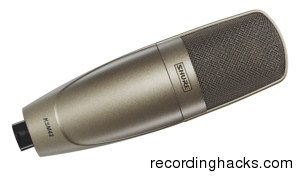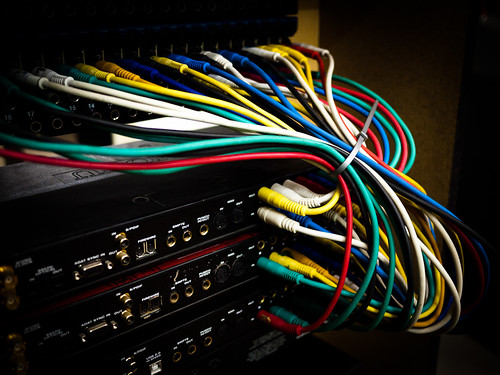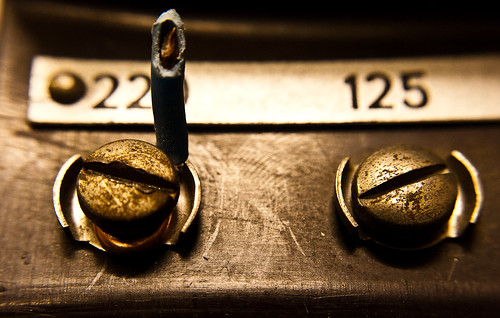Shipping TODAY!!!
Friday, December 16, 2011
Tuesday, November 29, 2011
Saturday, November 19, 2011
Monday, November 14, 2011
Monday, November 7, 2011
Sunday, October 23, 2011
Tuesday, October 18, 2011
AEA RPQ 500
RPQ500
High Performance Preamp
Clean gain with Curveshaping for API 500 series racks.
• 80 dB of quiet JFET gain • High-impedance No LoadTM inputs • CurveShaperTM EQ for extended highs and articulate lows • Line-level input mode for using the EQ during mixdown • Output level control • VPR alliance application pending
Originally designed to deliver the truest and most natural gain for impedance and noise sensitive ribbon microphones, the full-rack AEA RPQ preamp has proven itself to be the perfect match for any microphone, ribbon or not. The new RPQ500 module is based on this successful design and provides the same ultra-clean, high- gain signal path that has earned AEA preamps their great reputation, in a 500 series package. The RPQ500 has been enhanced with additional features, turning it into a workhorse tool for your API 500 compatible rack.
The RPQ500 delivers the bandwidth and quietness needed for high resolution recording. JFET circuit topology delivers all the dynamics, subwoofer bass, and fast transients that your microphones can record. No LoadTM input impedance above 10,000 Ω means the RPQ500 will not load down a mic and change its sound. Low Energy StorageTMcircuit design instantly recovers from overloads for superior dynamic performance.
The CurveShaperTM offers a natural option for sculpting your sound right at the start of the signal path. Switchable and tunable low frequency (LF) and high frequency (HF) contour controls allow you to tame proximity problems and provide HF extension and slope control. The high-frequency CurveShaperTM excels at adding a touch of air or presence, and the low-frequency control can remove boxiness and boominess in a fast and unobtrusive way. The bottom line is a versatile channel strip that will deliver an unadulterated performance in any application.
The Line/Mic switch bypasses the microphone gain stage and allows the EQ to be used for tracking with other preamps or during mixdown. Add the output level control and the RPQ500 becomes a high-quality processing tool that can be used for mixing and mastering when combined with summing racks and mixers such as the Purple Audio Moiyn or the Roll Music Folcrom.
The original RPQ with CurveShaperTM was designed to fully capture every nuance of ribbon microphones: vintage or modern, passive or phantom powered. Engineers have discovered that the RPQ also complements their moving coil, tube and solid-state mics. By virtue of its sonic qualities and versatility, the AEA RPQ500 is the tool of choice for all microphones whenever a true and pristine signal path is needed. It will allow the best performance of all your microphones with a cleaner, more open, and more responsive sound than you’ve ever heard.
Manufactured by Audio Engineering Associates:
1029 N. Allen Ave. Pasadena, California 91104, USA
Tel: +626-798-9128 Fax: +626-798-2378 www.ribbonmics.com
I helped hand build the first five prototypes! I saw this project form cradle to grave I am so ecstatic.
Labels:
AEA,
AEA RPQ500,
RPQ,
RPQ500
Wednesday, October 5, 2011
Apple Visionary Steve Jobs Dies At 56
by LAURA SYDELL
Steve Jobs — the man who brought us the iPhone, the iPod and the iMac — has died. The co-founder of Apple was 56 years old. Jobs had been battling pancreatic cancer for years.
Labels:
apple,
steve jobs
Tuesday, October 4, 2011
Ghost Town Jenny
I built the site for Ghost Town Jenny check it out here.
Labels:
Random
Thursday, September 22, 2011
AEA
So since June I have been interning at Audio Engineering Associate, and it has been rather amazing I can't wait to share about what I have been doing
Friday, August 12, 2011
Adding a MIDI input to a Game Boy
Via Hack A Day
Sprite_tm] is back again, and his work never fails to impress. His latest project is aGame Boy Advance MIDI synth that takes MIDI data from a keyboard or sequencer and maps that to Game Boy sound channels.
Because he seems to never do anything the normal way, [Sprite_tm] decided to run the Game Boy without a cartridge. We’ve seen this before; the GBA boots into the synth software over the link cable with multibooting.
[Sprite_tm] designed a circuit around an ATMega168 to boot the Game Boy, receive MIDI messages, then translate and send them through the link port. The main Game Boy code also has a simple interface to display graphics on the screen and a sequencer that allows him to record MIDI messages into 8 different tracks. We’re thinking that being able to sequence Game Boy chiptunes with a keyboard is a huge improvement over Little Sound DJ.
As [Sprite_tm] freely admits he’s not the best keyboard player, he gave his GBA synth to a musician friend. The resulting song is a veritable deluge of 8 bit chiptunes. The electronics behind this build are very simple (and can fit inside a MIDI cable), so we’re ready to break out the iron for this one. All the relevant code is posted [Sprite_tm]‘s build page. There’s also a video walking through the features of his creation, viewable below.
Shar
Thursday, August 11, 2011
10,027
Woot broke 10,000 views thanks for everyone who has stopped by.
Thursday, July 7, 2011
Random update
So I just felt like checking in sold a fuzz factory yesterday and I am still working on setting up my recording rig, have a great summer internship at AEA and getting to learn about ribbon mics first hand.
Sunday, July 3, 2011
Saturday, June 25, 2011
Thursday, June 2, 2011
Wednesday, June 1, 2011
Monday, May 30, 2011
What I have been working on
So its been rather slow around here been rather busy with school and other projects. More stuff from Matt Kollar and the Angry Mob to come, its going to be great. Here is a video that I helped shoot, record audio, and build swords.
Sunday, May 29, 2011
HELLO
Hello I just wanted to say hello to you all that drop by thank you for checking out the site!
Thursday, May 12, 2011
Wednesday, May 4, 2011
Monday, April 25, 2011
Recording Photos
Labels:
AKG 414,
Matt Kollar And the Angry Mob,
Recording
Monday, April 18, 2011
pageview update
Hello everyone who stops by. 1000 views this month and 6,000 overall.
Friday, April 15, 2011
Tuesday, April 12, 2011
Monday, April 11, 2011
Saturday, April 9, 2011
Wednesday, April 6, 2011
Sunday, April 3, 2011
Reamp Box Curves
update on the reamp box here is the frequency response of the xlr cable run direct into MOTU 896HD. Test was done using sine wave sweep 20 to 20k 20 sec duration.
This is the response of the reamp box inline with MOTU 896HD In passive mode.
Subscribe to:
Posts (Atom)


















































